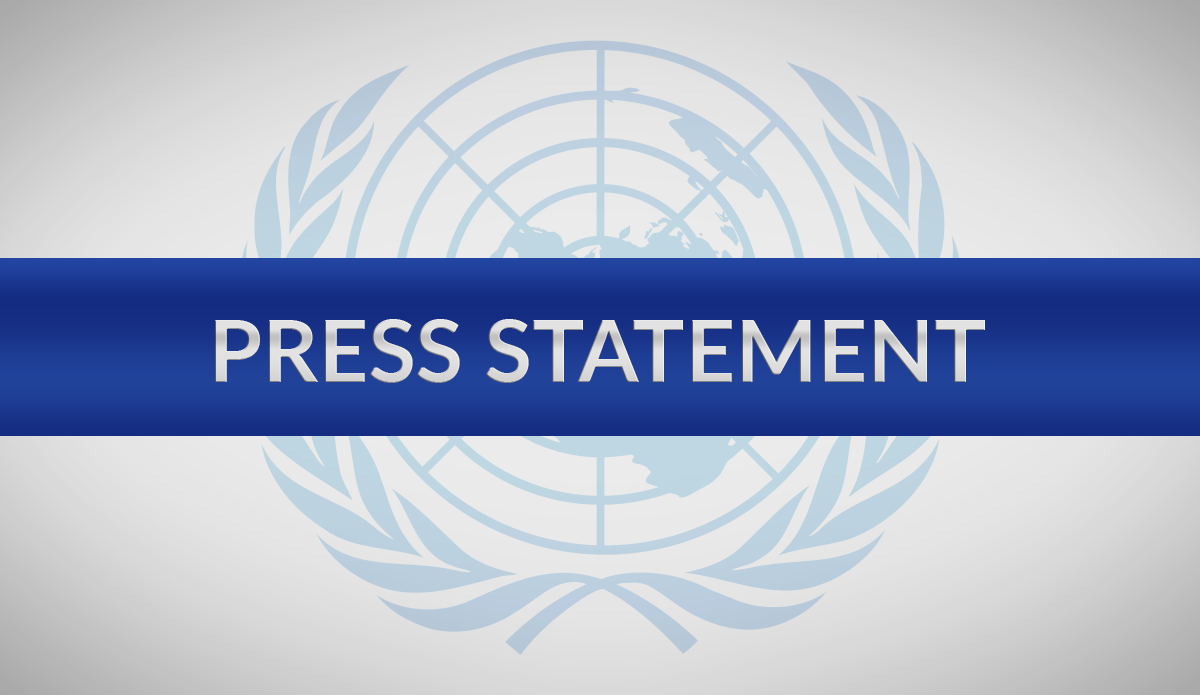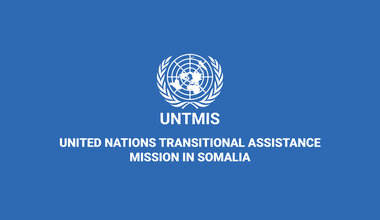SRSG Nicholas Kay press briefing in Geneva
Geneva – Nicholas Kay, Special Representative of the Secretary-General for Somalia and Head of the UN Assistance Mission in Somalia said that he was in Geneva on the occasion of the Human Rights Council's High-Level Dialogue on Somalia. Mr. Kay strongly condemned the recent terrorist attack in Nairobi and expressed condolences to the families of the victims. Despite that tragedy, Somalia had the best opportunity in a generation to move forward towards peace and eventual prosperity. There were signs for cautious optimism, such as a central, internationally recognized Government in Mogadishu and wide international support for Somalia. The Government was increasingly in control of the country. Large challenges remained, including in the field of human rights, but all the progress which had been made in Somalia was not going to succeed unless security challenges were met. Security remained the number one challenge.
Controlling and defeating Al-Shabaab was the precondition for that goal. The attack in Nairobi had showed once again that the threat from Al-Shabaab was international and that terrorism did not respect any borders. The UN believed that the campaign against the group ought to be intensified, and it had to be three-dimensional: military, political and practical. Efforts had to be redoubled, for which reason Mr. Kay was going to United Nations Headquarters in order to request more resources, in particular for the African Union Mission in Somalia (AMISOM). AMISOM was in need of helicopters (it did not have a single helicopter for a country which was roughly the size of Afghanistan), armed vehicles and possibly also a surge in troops. Somali national security forces also needed more support from the international community. Such small extra investment in Somalia should be seen in comparison to what had been spent in other countries, such as Afghanistan, Iraq or Mali. The price of walking away would be far higher.
Answering a question on the current estimated strength of Al-Shabaab and the presence of Kenyan and UN troops in the country, Mr. Kay said that most estimates would put the Al-Shabaab forces at about 5,000, but it was difficult to make an accurate assessment. Many of these troops were not hard-core ideologues, and had probably joined for economic and other reasons, which meant that the support for the group could be “peeled away” with the right approach. Mr. Kay explained that the UN had no troops in Somalia, while AMISOM was close to its mandated number of 17,731. UN’s yearly logistical support package to AMISOM cost around USD 520 million, while the European Union was providing EUR 16 million per month for stipends to AMISOM troops.
Asked whether there were plans for negotiations with Al-Shabaab, Mr. Kay reiterated that there should be a political dimension in the campaign against Al-Shabaab. Some of the leaders
of the group had already splintered and surrendered, and the Somali Federal Government had its own ways of communicating with Al-Shabaab. Foot soldiers and rank-and-file members of the group had to feel comfortable about disarming and reintegrating, and one such national disarmament and demobilization programme was already under way. The Federal Government of Somalia had already announced that it was ready to talk to all those who would renounce violence.
On the question whether the attack at the Westgate shopping mall in Nairobi bore the signature of Al-Shabaab, Mr. Kay responded that there had been claims of responsibility by Al-Shabaab, but there were speculations on Al-Qaeda involvement as well. There were signs of cross-hatching and support among various groups of shared ideology. Definite answers would emerge soon enough. On the situation in Kismayo, Mr. Kay informed that Al-Shabaab had been pushed out of Kismayo, but was not very far from the city and was occasionally launching attacks on the city, which was being defended by Kenyan and Sierra Leonean AMISOM troops. The political agreement which had recently been signed in Addis Ababa between the Juba Interim Administration based in Kismayo and the Federal Government was a significant development for a way forward. Asked whether Kenyan troops might leave AMISOM soon, especially in the aftermath of the attack in Nairobi, Mr. Kay said that he had seen no indication of it. He believed that the events in Nairobi would actually strengthen the resolve of Kenya and other AMISOM troop contributing countries.
Asked whether he was surprised by the attack in Nairobi and if Al-Shabaab had gone off the radar of the international community due to the increased focus on Syria, Mr. Kay responded that he was not surprised as the group had been threatening and conducting numerous smaller scale attacks for a while. The UN itself had suffered a recent attack in Somalia. The eye of the international media had admittedly not been on Somalia in the recent period but attention had to increase. The UN and the African Union were on the verge of making a significant breakthrough in Somalia, but it was necessary to increase these efforts, the impact of which would be felt beyond Somalia, from Bangui to Bamako. Likewise, piracy, which used to be a major problem and cost the world economy an estimated USD 18 billion per year, had been effectively dealt with, and no ships had been pirated since May 2012. Sustaining such reduction required securing the situation on the ground as well.
Answering the question on the current food situation in Somalia, Mr. Kay said the response to the famine had been relatively effective, and for the first time in years, less than 1 million people were at risk. Resilience, nonetheless, was not strong and was weather-related, which meant that further concerted involvement was needed.
On the question whether there could possibly be aerial support from the US Fifth Fleet or other international actors in the nearby waters, Mr. Kay emphasized that AMISOM was supposed to be funded for have 12 helicopters, but it did not have any. Troop contributing countries had to provide both attack and support helicopters; if these countries were not able to do so, other creative solutions would have to be found. Helicopters were essential because AMISOM, due to its successes, was now spread more thinly across the country
As to who was financing Al-Shabaab, Mr. Kay responded that they were self-financing to a large degree, through taxation and trade, including by controlling three ports and exporting and importing materials, such as an illegal export charcoal, which provided them with an estimated USD 35 million per year. At the same time, it would not have required a large investment to purchase hand grenades and other light weapons which had been used to murder civilians in Nairobi.
Mr. Kay informed that the African Union and UN had conducted a joint exercise to review AMISOM and the security situation on the ground in Somalia, recommendations on which would be forwarded to the Security Council, and might include an increase in troop numbers.
 UN
UN





